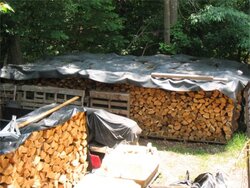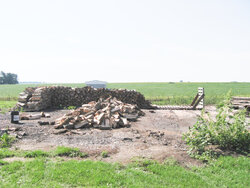So, we all know we need to cover our stacks, at least here in the Atlantic states. We also know tarps tend to tear or sag and collect water, often despite our best efforts to make them shed.
Plywood is a cheap, easily obtainable, and almost infinitely reusable solution. It might look a little less offensive in the back yard, versus roofing scraps , too.
Attachment method: nails vs screws. Screws can be more easily removed when there's not snow and ice covering them , but nails probably when there is.
Plywood is a cheap, easily obtainable, and almost infinitely reusable solution. It might look a little less offensive in the back yard, versus roofing scraps , too.
Attachment method: nails vs screws. Screws can be more easily removed when there's not snow and ice covering them , but nails probably when there is.





 It's a state holiday if we get snow.
It's a state holiday if we get snow.



